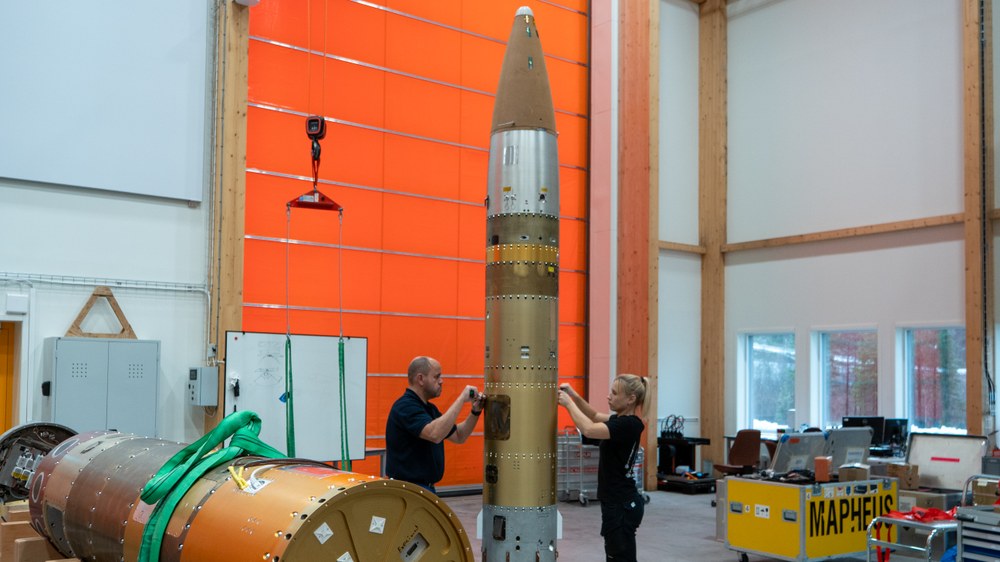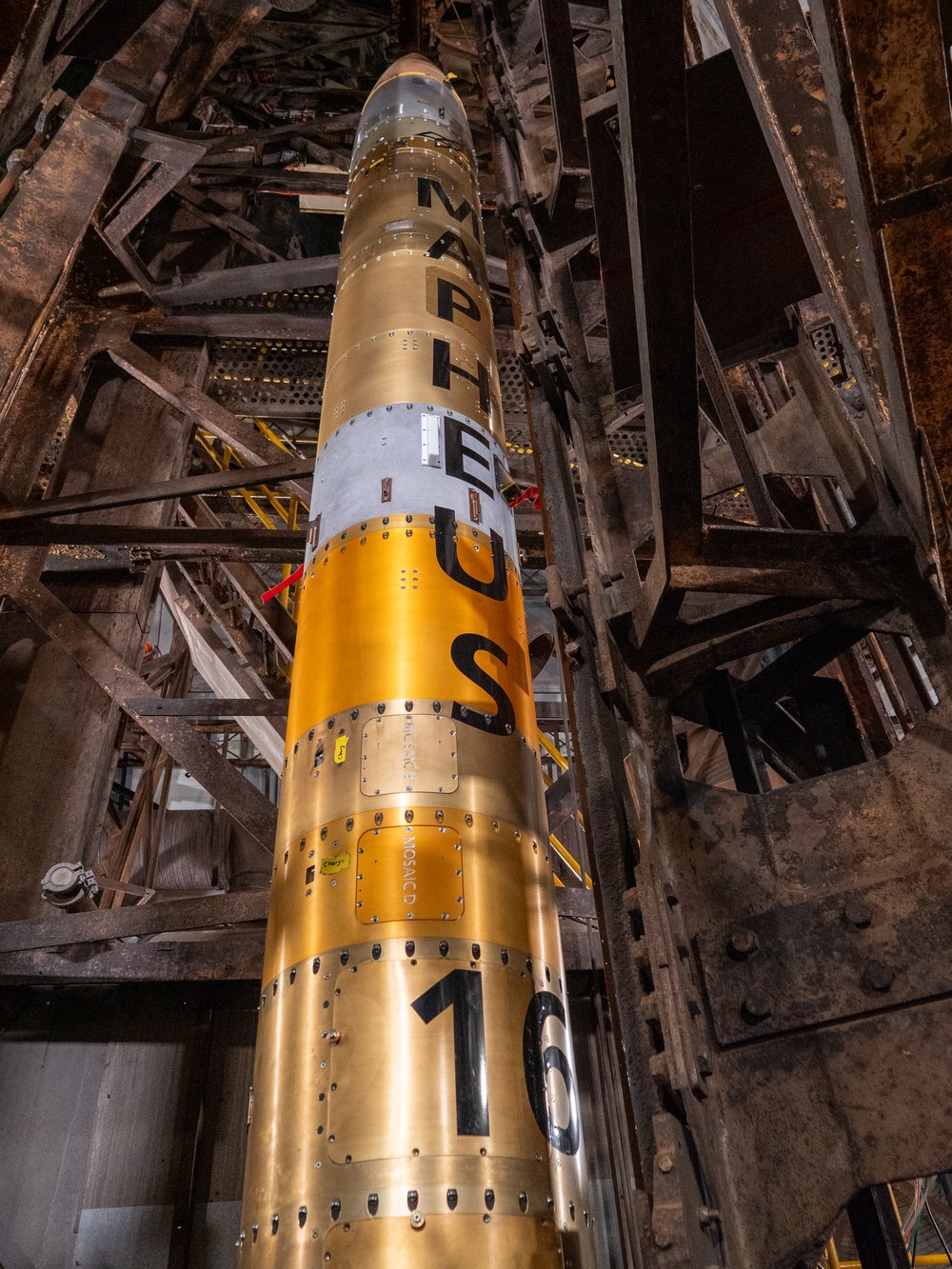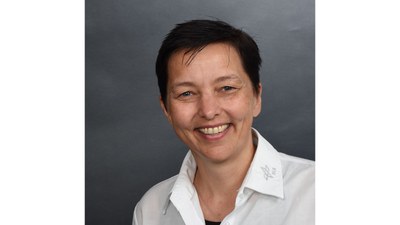Two Red Kite motors propel 500 kilograms of experiments into microgravity



- On 12 November 2025, DLR's MAPHEUS-16 high-altitude research rocket successfully lifted off from the Esrange Space Center in Sweden.
- The flight carried 21 experiments into microgravity for more than six minutes, enabling unique research.
- The flight was the first to be powered by two Red Kite motors, a joint development by DLR and Bayern-Chemie.
- Focus: Space, high-altitude research rockets
Experimentation in microgravity is a key element for many new technologies – for example in engineering, materials research or medicine, enabling new insights. In microgravity, that is, when the gravitational force is extremely reduced, physical, chemical and biological processes occur differently, sometimes occurring faster than on Earth. For this reason, the German Aerospace Center (Deutsches Zentrum für Luft- und Raumfahrt; DLR) has regularly conducted flights with sounding rockets for more than 15 years as part of its MAPHEUS (Materialphysikalische Experimente unter Schwerelosigkeit; materials physics experiments under microgravity) programme. At 05:05 CET on 12 November 2025, the MAPHEUS-16 mission launched from the Swedish Space Corporation's (SSC) Esrange Space Center to begin its journey into weightlessness. For the first time, DLR combined two Red Kite rocket motors for the launch, and a new payload record was consequently broken – the rocket lifted approximately 500 kilograms of scientific cargo into microgravity for just over six minutes. The Red Kite motor was developed by DLR in collaboration with German company Bayern-Chemie.

We are consistently pursuing our goal of expanding the range of services offered by our high-altitude research rockets. I am therefore very pleased that, for the first time, we have been able to transport half a tonne of experiments into space and back again," says Anke Pagels-Kerp, DLR Divisional Board Member for Space. "With this approach, we are making sounding rockets even more versatile and flexible as research and testing platforms – for DLR's own projects and, in the future, as a service for partners in research and industry.
Standing over 13 metres tall with a launch weight of three tonnes, this research rocket reached a maximum altitude of almost 260 kilometres during its total flight time of 14 minutes and 41 seconds. After the rocket motors were jettisoned, the payload section on the rocket's nose followed a parabolic trajectory – creating conditions similar to microgravity for several minutes during the freefall back towards Earth. Twenty-one scientific experiments then landed safely, slowed by two parachutes, in a designated area and were recovered by helicopter.
Red Kite motors from Germany – powerful performance for more time in microgravity
Underneath the rocket's red casing is a very powerful solid-fuel motor which burns approximately one tonne of fuel in just 13 seconds – a mighty boost for highly challenging flight profiles and a wide range of missions. The Red Kite completed its inaugural flight back in November 2023. "The Red Kite motor is setting new standards when it comes to the performance and handling of sounding rockets. Depending on the mission profile, two of these propulsion stages can be combined, thereby increasing both performance and payload capacity," explains Indira Keserovic, MAPHEUS-16 engineer and project manager at the DLR Mobile Rocket Base (MORABA). With decades of experience, the MORABA team is responsible for planning, overseeing and launching suborbital sounding rockets.
Sounding rockets – cost-effective microgravity research
Through its joint development with Bayern-Chemie and other German manufacturers, the DLR team knows the features of 'their' engine in minute detail and has optimised its use and handling especially for sounding rockets. As a result, missions can be planned and executed more efficiently. "Our goal for the coming years is to achieve up to ten minutes of microgravity," says DLR expert Keserovic.
Compact and practical – micro-experiments in a cube
MAPHEUS-16 also featured three rocket segments known as MOSAIC (Micro-Experiments On Sounding Rockets As Insert Cubes). Each of these segments accommodates eight compact cubes, which each measuring ten centimetres along their edge and each housing an individual experiment. But these are no ordinary cubes; as Thomas Voigtmann, MAPHEUS project lead at the DLR Institute for Frontier Materials on Earth and in Space, explains: "The MOSAIC system has standardised interfaces for power supply, communication and mechanical attachment. True to the plug-and-play principle, this allows researchers to launch more experiments into microgravity with greater ease. At the same time, the cube-based and modularly expandable design of MOSAIC makes it possible to use the very limited space and resources on board sounding rockets as efficiently as possible." Companies including adesso, igus and Lamb Space Tec from the German state of North-Rhine Westphalia were also involved in the development of the MOSAIC system and previous MAPHEUS missions.
3D printing and organoids in microgravity
In 3D printing – also known as additive manufacturing – materials are deposited layer by layer to create three-dimensional structures. This manufacturing process is increasingly used on Earth and is expected to play an important role in long-duration space missions, enabling, for example, the production of replacement parts in flight or on the surface of the Moon and Mars. One DLR experiment aboard MAPHEUS-16 used a specialised 3D printing technique to produce a sample in microgravity. The researchers were particularly interested in the sample's microstructure and mechanical properties. Following the flight, they will compare the sample with a specimen manufactured on Earth, the goal being to better understand the feasibility and robustness of additive manufacturing methods in space.
Biomedical experiments on the MAPHEUS flight also investigated the impact of reduced gravity on organoids, cells and biological membranes. Organoids are small structures grown in the laboratory that resemble organs and are far more complex than the cell cultures used to date. The results of these experiments can provide important insights into the influence of microgravity on the body and its organs. "MAPHEUS offers an ideal platform for biomedical research," explains Dr Jens Hauslage from the DLR Institute of Aerospace Medicine. "We have the opportunity to insert living samples into the rocket shortly before launch, and after the flight we can quickly recover them, enabling immediate laboratory analysis to see what effects the time in microgravity had." The biomedical experiments are being conducted in collaboration with the University Hospital Bonn, the GSI Helmholtz Centre for Heavy Ion Research in Darmstadt, the University of Bordeaux and La Trobe University Melbourne.
Related links
MAPHEUS programme
The MAPHEUS programme (Materialphysikalische Experimente unter Schwerelosigkeit; materials physics experiments under microgravity) gives DLR the flexibility to carry out experiments on sounding rockets under microgravity conditions that would otherwise only be possible aboard space stations. As a result, researchers benefit from independent and regular access to experiments in weightlessness, meaning technologies can be tested step by step and in a timely manner, while validating and improving computer models. This combination of simulation and experimentation in microgravity is a defining feature of DLR's research. Flights have taken place regularly since 2009.
